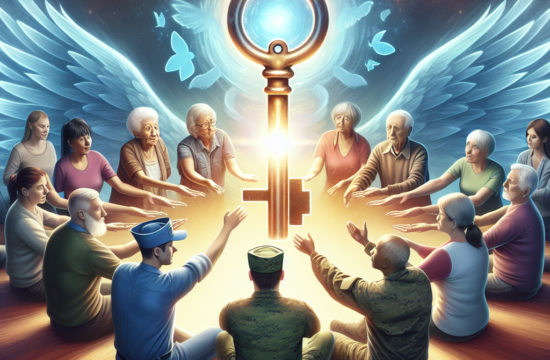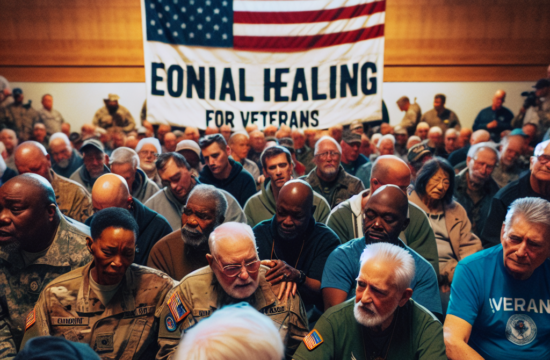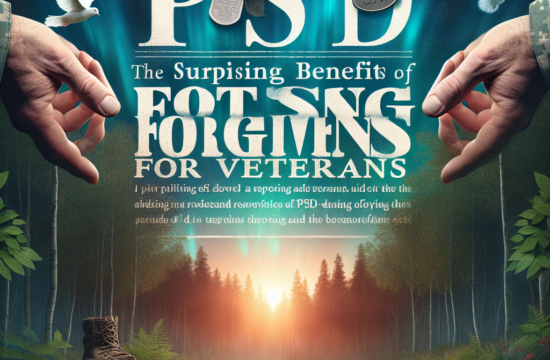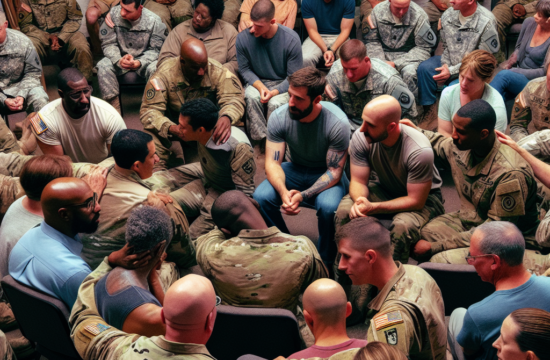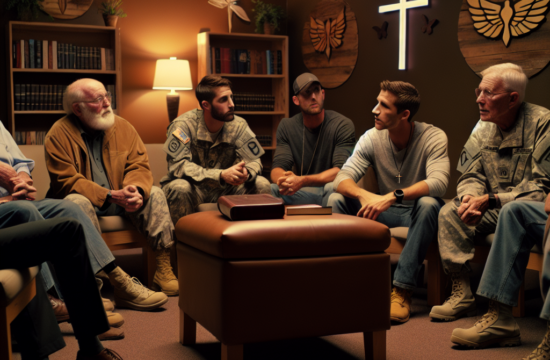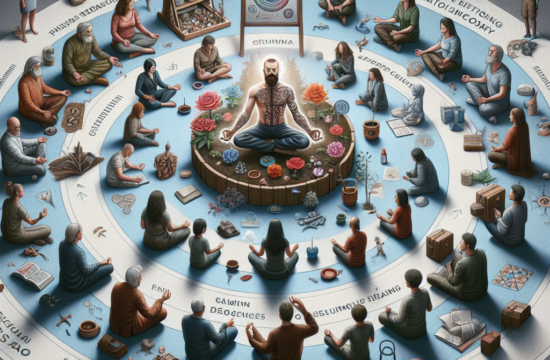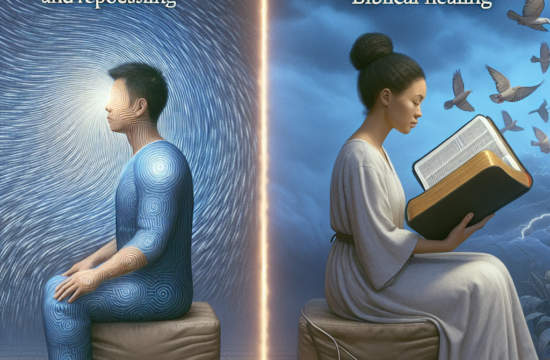==> Thank you for reading this post! Click Here If you are looking for support and Victory over PTSD.
Identifying Triggers
Recognizing Personal Triggers
In my journey, identifying my PTSD triggers was a game changer. I found that these triggers could come from various places—sounds, images, or even smells. At first, I didn’t realize how much certain situations affected my mood and reactions. It was through self-awareness that I learned to pay attention to my feelings and the experiences that seemed to initiate panic or anxiety.
My advice? Keep a journal or a note app on your phone to jot down moments when you feel uneasy. This record can help you see a pattern over time, which is super helpful in understanding what sets off your anxieties. Pinpointing these triggers is the first step in mitigating their effects.
Remember, it’s not just about the obvious triggers—sometimes, it’s the small, little things that we overlook. Having a deep understanding of your personal landscape makes a big difference in how you navigate the world around you.
Understanding Triggers in Context
Triggers don’t operate in isolation; they often interact with our environment and current emotional state. For example, a loud noise might be a trigger if I’m already feeling anxious. Recognizing that my overall mood can amplify how I respond to triggers helped me tremendously.
It’s important to reflect on your surroundings when a trigger affects you. What was happening at that moment? Were there stressors in your life that made you more vulnerable? This reflective practice can offer insights that you might not see at first glance.
Surrounding myself with supportive friends and family also changed the way I experienced triggers. Having a kind soul to remind me that I’m safe can brighten even my darkest moments. Never underestimate the power of a well-timed hug!
Creating a Trigger Log
Taking notes on my triggers led to even deeper understanding. I started by listing triggers in a simple document and added my thoughts and feelings connected to each one. Each entry became a stepping stone towards healing. Over time, I began to see patterns—not just in the triggers themselves, but in my responses.
This log not only helped me become more conscious of my triggers but also prepared me for them. If I’ve already identified a situation that might provoke anxiety, I can strategize on how to approach it. Sometimes, that means taking deep breaths or going in with a friend for support.
Ultimately, documenting triggers can be empowering. Instead of feeling blindsided, I was able to recognize the potential for anxiety and prepare ahead. It’s all about creating a roadmap through your emotional landscape.
Establishing Coping Mechanisms
Mindfulness and Breathing Techniques
When I’m faced with triggers, employing mindfulness techniques has been a lifesaver. Practicing deep breathing helps me to ground myself in the present. I often take a few slow, intentional breaths to calm my racing heart. It’s amazing how just focusing on my breath can bring me back to a state of calm.
Incorporating mindfulness into my daily routine has also yielded incredible results. Whether it’s through guided meditation apps or simple moments of reflection, this practice has allowed me to detach from overwhelming feelings. Remember, it’s a muscle that gets stronger the more you use it!
Experimenting with different mindfulness practices—like yoga or nature walks—has also expanded my toolkit. Finding what resonates with me personally has made all the difference. It’s not a one-size-fits-all approach, and that’s okay!
Developing Support Networks
Building a support network of people who understand your journey can change the game. Friends, family, or even support groups provide a safe space for sharing experiences. I’ve found that just talking about my triggers with someone who listens can lessen their weight significantly. It’s like a breath of fresh air!
Social media has also opened doors to connecting with others who have similar experiences. I’ve joined online communities where people share their stories, support, and coping strategies. Finding individuals who share the same struggles has made me feel less isolated and more empowered.
Sometimes it’s hard to ask for help, but in reality, doing so can strengthen your support system. Never hesitate to reach out—there’s a tribe out there eagerly waiting to support you!
Creative Outlets for Expression
One of the best coping mechanisms I’ve discovered is expressing myself through art and writing. It’s like releasing all the feelings pent up inside. Whether it be painting a canvas or journaling about my day, creative outlets help me process my emotions in a more tangible way.
Finding a form of expression that resonates with you can lead to profound healing. I’ve met people who find solace in music, while others prefer movement through dance or even sports. Whatever it is, explore these avenues to express your emotions as a healing strategy.
Moreover, these creative practices foster resilience. When I face a trigger, I can channel my feelings into my art rather than let them overwhelm me. It becomes a transformation of negativity into something beautiful, which is incredibly therapeutic.
Practicing Self-Compassion
Forgiving Yourself
I’ve come to realize that self-forgiveness is key in navigating PTSD. There were moments I felt ashamed or guilty over how I reacted to triggers. However, I’ve learned that it’s essential to acknowledge my experience with kindness. Just because I have triggers doesn’t define my strength or character!
It’s okay to have bad days. Show yourself the same compassion you would offer to a friend in distress. That realization was liberating for me. Redefining my self-talk and pushing aside the inner critic has opened up avenues for healing.
Journaling can really help with this process. I often write letters to myself, offering understanding and support. It’s a way of dialoguing with my inner self, and it helps reenforce that I’m in this journey for the long haul. You’ve got to be on your own side!
Get Support and Help with Recovery! Visit us for more Information and Support
Setting Boundaries
In my experience, setting boundaries is a form of self-love that many of us overlook. Learning to say ‘no’ or limiting interactions that trigger negative feelings has been monumental. It’s not selfish to prioritize your mental health; in fact, it’s critical!
Recognizing that not everyone will understand your triggers has encouraged me to speak up about my boundaries. Whether it’s about social gatherings or engaging with certain topics, articulating my needs has reduced anxiety significantly. Plus, it fosters a healthier environment for the relationships that matter to me.
Understanding that boundaries evolve is also important. What works today might not work tomorrow, and that’s okay. Be flexible with yourself and accept that your journey might shift over time.
Nurturing Positive Self-Talk
The words we tell ourselves have serious power. Cultivating a positive internal dialogue has been paramount in my healing journey. Whenever a trigger strikes, I try reminding myself of my resilience and accomplishments. It may feel kinda silly at first, but it really paves the way to self-empowerment!
Replacing negativity with affirmations has also worked wonders for me. I started speaking kindly to myself, affirming that I am brave, capable, and worthy of love. These mantras have become a lifeline during tough moments—a reminder to stay grounded.
The growth around positive self-talk isn’t linear, and that’s totally fine. Celebrate small victories on the tough days, and be patient with yourself. It’s the little moments of victory that build up to significant change over time.
Exploring Professional Help
Finding a Therapist
Pursuing professional help was one of the best decisions I made. Connecting with a licensed therapist who specializes in PTSD helped me explore feelings and coping strategies in-depth. There’s something incredibly validating about working with someone who understands the nuances of trauma.
Finding the right therapist can take time, and that’s perfectly normal. I went through a few before finding a fit that felt right for me. It’s not a failure; it’s part of the process. Trust your instincts and take your time to find someone who you feel genuinely comfortable with.
That said, therapy isn’t a magic bullet. It complements the self-work we do outside sessions, but it can offer tools to help manage triggers more effectively. Together, we can cultivate resilience that carries out into everyday life.
Exploring Medication if Necessary
For some, medication can play a vital role in managing PTSD symptoms. I’ve seen several friends who found relief through prescribed treatments. However, discussing this option with a medical professional who understands trauma is crucial. They can guide you towards the best solutions that fit your needs.
It’s essential to approach medication with awareness. It doesn’t replace the need for therapy or personal growth, but it can offer a stabilizing effect as you navigate your healing journey. This approach can empower you to embrace manageable strategies in the long run.
Moreover, keeping communication open with your healthcare provider is key. Regular check-ups can ensure that any adjustments to your treatment plan are up-to-date and effective, leading to further progress in overcoming PTSD.
Utilizing Support Groups
Support groups can be a fantastic complement to individual therapy. I’ve attended several, and the sense of community has been invaluable. It’s incredibly comforting to share experiences with people who truly understand what I’m going through.
These groups normalize the struggles associated with PTSD. Hearing different perspectives helps frame my personal challenges in a broader context, making me realize I’m not alone. There’s immense power in shared stories and vulnerability.
Additionally, support groups often provide resources for further education on PTSD, which can be incredibly enlightening. It’s all about surrounding yourself with positivity and strength, and this community can do just that!
Frequently Asked Questions
1. How can I identify my PTSD triggers?
Start by keeping a journal of your feelings and experiences. Look for patterns in what situations provoke anxiety and take note of any common themes. Pay attention to your reactions and reflect on your environment during these moments.
2. What are effective coping mechanisms for PTSD?
Mindfulness practices, engaging in creative outlets, and developing a solid support network are effective coping techniques. Remember, everyone is different, so explore various strategies to find what resonates best with you.
3. Should I consider therapy for PTSD?
Absolutely! Therapy provides a safe space to explore your feelings and develop coping strategies. It can be incredibly beneficial to connect with a licensed professional who specializes in trauma. They can offer guidance and support that complements your self-healing journey.
4. How do I set boundaries with loved ones regarding my triggers?
Be open and honest with your loved ones about what you’re comfortable with. Use “I” statements to express your feelings, and don’t hesitate to communicate your needs clearly. Remember, it’s about fostering a healthy relationship while prioritizing your well-being.
5. Is it normal to experience setbacks in my healing journey?
Yes, setbacks are a part of the healing process. They don’t define your progress, and it’s crucial to approach them with compassion. Be patient with yourself, and remember that healing is not always linear—celebrate even the small victories!






